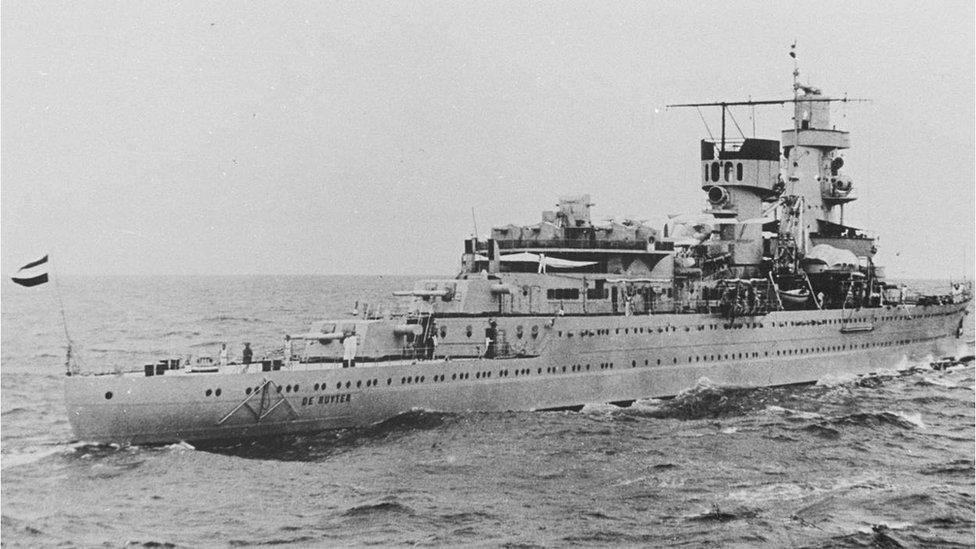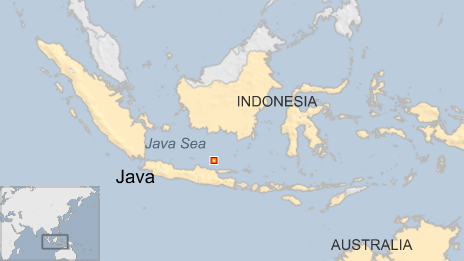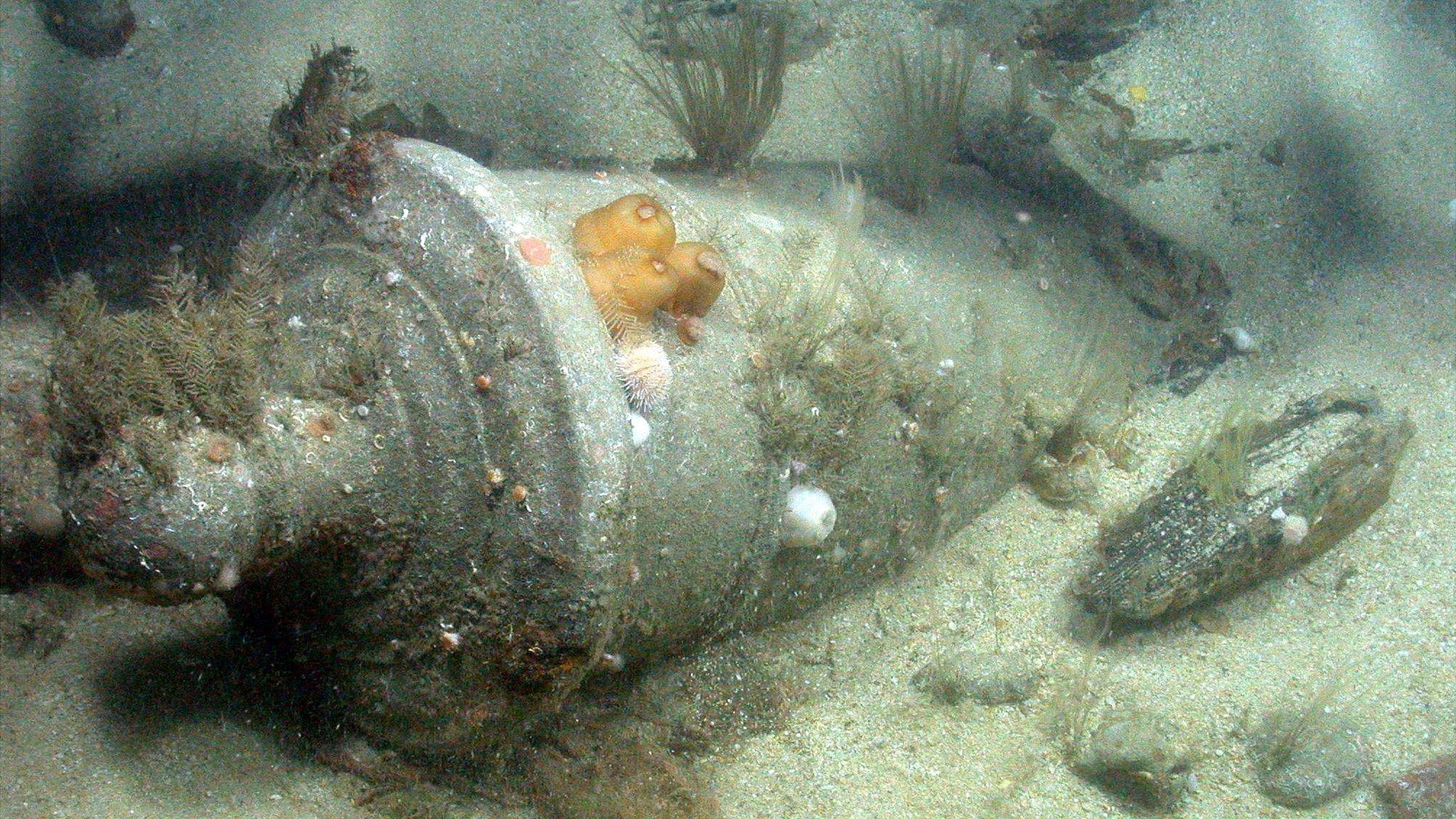Mystery over Dutch WW2 shipwrecks vanished from Java Sea bed
- Published

HNLMS De Ruyter with 345 men on board was the flagship of Dutch Rear-Admiral Karel Doorman
Three Dutch World War Two ships considered war graves have vanished from the bottom of the Java Sea, the Dutch defence ministry says.
All three were sunk by the Japanese during the Battle of the Java Sea in 1942, and their wrecks were discovered by divers in 2002.
A report in the Guardian, external says three British ships have disappeared as well.
The British government says it is "distressed" by the reports and is investigating.
A new expedition to mark next year's 75th anniversary of the battle found the wrecks missing.
The Guardian says it has seen 3D images, showing large holes in the seabed where HMS Exeter, HMS Encounter, the destroyer HMS Electra, as well as a US submarine, used to be.
Experts say salvaging the wrecks would have been a huge operation.
The Dutch defence ministry is to investigate the mysterious disappearance.
In a statement, it said that two of its ships had completely gone, with sonar images only showing imprints, while large parts of a third ship, a destroyer, were missing.
"The desecration of a war grave is a serious offence," the ministry said.
The UK's Ministry of Defence confirmed that it had contacted the Indonesian authorities.
An MOD spokesperson said, "Many lives were lost during this battle and we would expect that these sites are respected and left undisturbed without the express consent of the United Kingdom."

Theo Doorman, 82, son of legendary Rear Admiral Karel Doorman, who led the battle, was on the expedition which hoped to film the wrecks two weeks ago.
He said he could not believe his eyes when the sonar images came in, showing only a groove where his father's ship had been.
"I was sad," he said.
"Not angry. That doesn't get you anywhere. But sad. For centuries is was a custom not to disturb sailors' graves. But it did happen here."


The Battle of the Java Sea
27 February 1942
Allied action to stop Japanese Navy
Dutch, British, Australian, US forces ships involved
Five cruisers and nine destroyers involved, Led by Rear-Admiral Karel Doorman
Only two ships remained
Vanished ships are HNLMS De Ruyter, HNLMS Java, and HNLMS Kortenaer
Defeat led to the Japanese occupation of the Dutch East Indies (now Indonesia)

The seas around Indonesia, Singapore and Malaysia are a graveyard for hundreds of ships and submarines sunk during the war.
Illegal salvaging of the wrecks for steel, aluminium and brass has become commonplace.
But the three missing wrecks were located 100km (60 miles) off the coast of Indonesia, at a depth of 70m. Salvage operators say it would not be easy to lift them.
"It is almost impossible to salvage this," Paul Koole of the salvage firm Mammoet told the Algemeen Dagblad. "It is far too deep."
Experts say the operation would have needed large cranes for long periods of time and would be unlikely to have gone unnoticed.
The Indonesian Navy, when contacted by the BBC, said they were unaware of the disappearance but said they would investigate.
"To say that the wreckage had gone suddenly, doesn't make sense," Navy spokesman Colonel Gig Sipasulta said. "It is underwater activities that can take months even years."
The Dutch authorities have also notified the other countries that formed part of the international expedition: the UK, Australia and the US.
- Published24 October 2014

- Published13 September 2016
